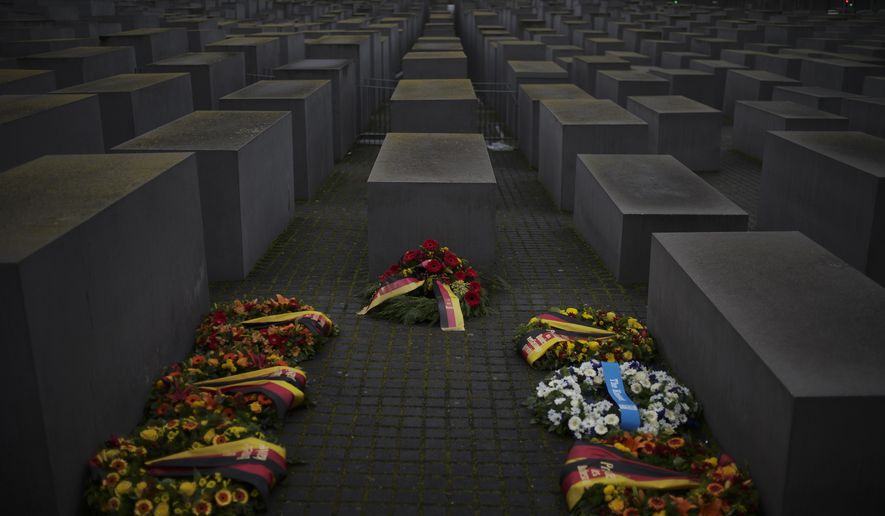Exhibits and online programs spotlighting one of history’s darkest events were planned Thursday for International Holocaust Remembrance Day, commemorating when Soviet troops liberated the Auschwitz concentration camp in Europe in 1945.
Educating citizens about the horrors of the Nazi era is essential to guarding the future, says Simmy Allen, international media spokesman for Yad Vashem, the world Holocaust remembrance center in Jerusalem.
“The phenomenon of Holocaust distortion and trivialization is at all new highs,” Mr. Allen said. “It’s now moved from the fringes of society into the mainstream.”
Mr. Allen said historically accurate recounting of the Holocaust is now more important than ever as fewer survivors remain to tell their stories.
The U.N. General Assembly designated Jan. 27 as International Holocaust Remembrance Day in 2005 to mark Nazi Germany’s genocide of Jews, homosexuals, Roma, disabled persons and others during World War II in what is considered a signal event in world history.
“The essence of the issue is why we remember at all,” Mr. Allen said. “We remember the past for a specific reason: that we try to use the past to shape a better future for our children and our children’s children.”
He said Yad Vashem normally hosts Israel’s diplomatic corps for a program on Jan. 27, but the event will be virtual this year due to a snowfall that fell as projected the night before. He added that additional commemorative activities will take place on Israel’s “Yom HaShoah” which begins on the evening of April 27 and concludes the following evening.
Along with the virtual event for diplomats in Israel, Yad Vashem has placed online the stories of 14 Jews who survived the Holocaust. Many, Mr. Allen said, were the only members of their families to survive.
“We use personal stories to tell the larger picture,” he added. “That’s the way the public can connect with the memory of the Holocaust.”
Another feature is a virtual iRemember Wall, where online visitors can be connected to the name of a Holocaust victim, Mr. Allen said.
The Israeli organization has the names of more than 4.8 million victims online, he added. Once matched, the present-day user can share the information on their social media, which he said brings awareness of the Holocaust to more people.
Yad Vashem also sends what it calls “ready-to-print” exhibitions to various locations around the world, which Mr. Allen described as museum-quality exhibits an institution can print and display.
One of the six Pontifical Universities run by the Vatican will feature an exhibit of art created by Holocaust victims, while museums in Indonesia — the world’s largest Muslim country — will feature a display titled “Shoah — How Was it Humanly Possible?”
Mr. Allen said “the main idea of the of online content and bringing these ready-to-print exhibitions to different all corners of the world is to engage the public, we need [them] to find that the Holocaust is relevant to them, even though it is 77 years after the end of the Holocaust.”
• Mark A. Kellner can be reached at mkellner@washingtontimes.com.




Please read our comment policy before commenting.